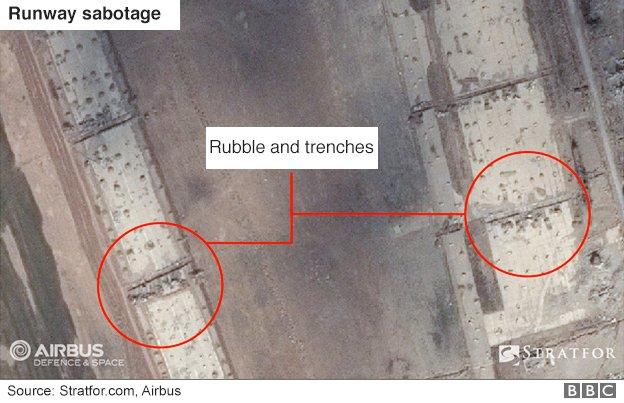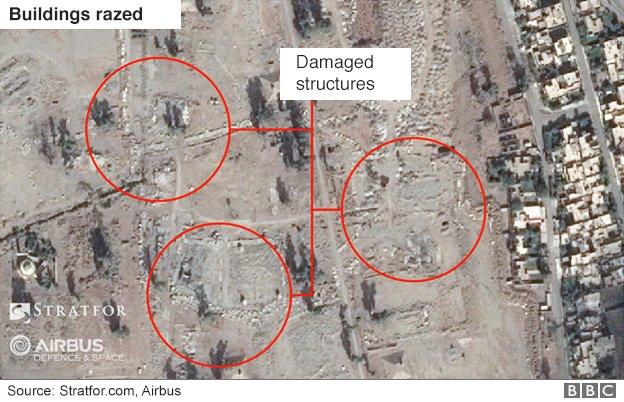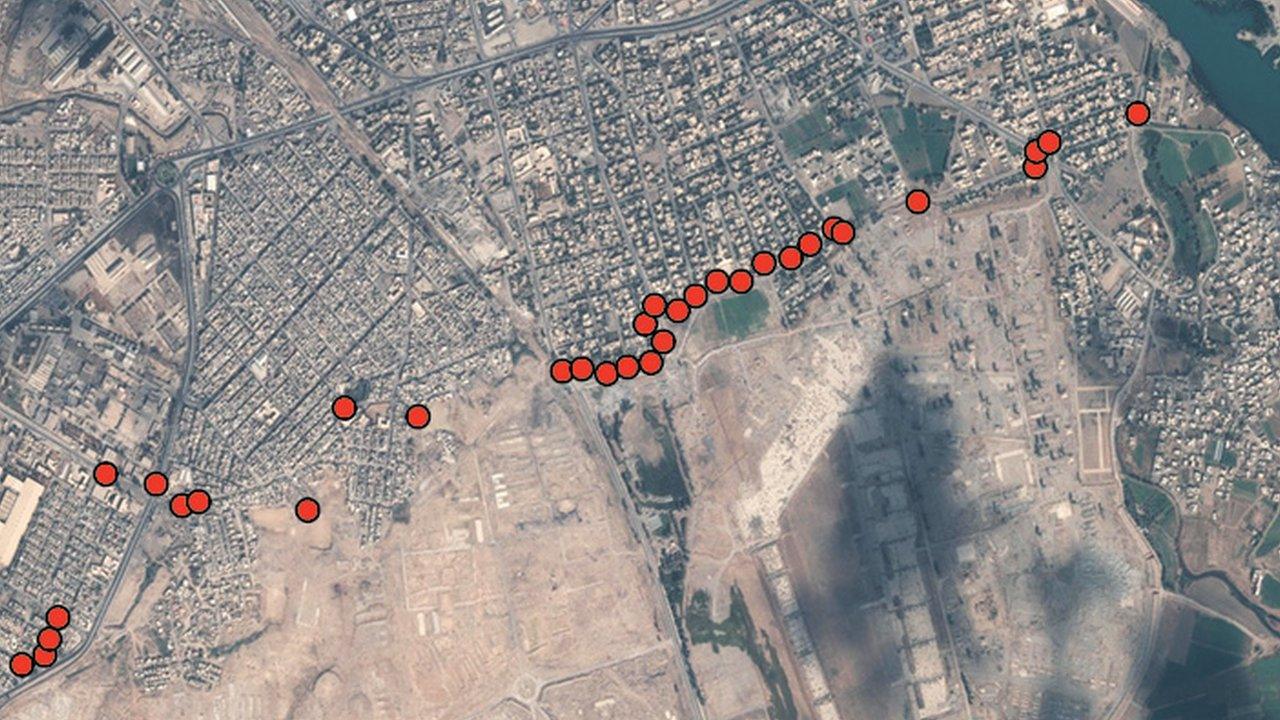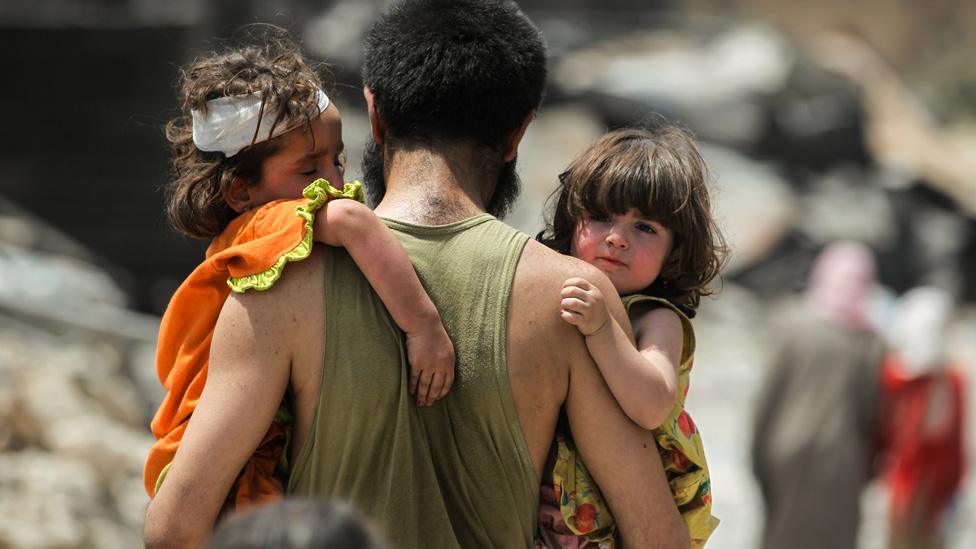Mosul: Satellite images reveal IS airport destruction
- Published
Satellite images of Mosul have revealed how fighters from so-called Islamic State (IS) have destroyed much of the city's airport to render it unusable as Iraqi forces close in.
The imagery, released by US geopolitical intelligence company Stratfor, external and taken on 31 October, shows how almost all the buildings at the airport, on the southern outskirts of Mosul, have been razed.
Runways have also been damaged, with wide trenches carved into them and rubble placed along their lengths, Stratfor's analysis says. Taxiways and aprons - where aircraft park - have also been sabotaged.
About 50,000 Iraqi security forces, Kurdish Peshmerga fighters, Sunni Arab tribesmen and Shia militiamen, assisted by US-led coalition airstrikes, are currently involved in a military offensive to reclaim Mosul from IS militants.
Government forces have already retaken dozens of villages and towns surrounding the city and are currently consolidating gains made in Mosul's eastern outskirts.

The damage to the runways has rendered the airport worthless as an asset for attacking forces, says Stratfor. Airports or runways are typically a primary objective for assaults on cities, since control over them can deny or enable logistical capabilities, having a considerable impact on the outcome of battles.
However, IS militants have ensured there is little left for approaching forces to gain by taking the site, Stratfor says.
IS employed a similar tactic at Qayyarah air base, 70km (43 miles) south of Mosul. However, the trenches dug there only partially covered the main runway, Stratfor says, and it was restored to service within months of the Iraqi forces recapturing the base in July.
By comparison, Mosul airport's destruction could be much more difficult to repair.

Mirroring the demolition at Qayyarah, IS fighters have also levelled almost every structure at Mosul airport.
Stratfor says that as well as preventing Iraqi forces and their allies from using the facilities, the tactic also serves to clear the line of sight for IS defensive positions on the northern edge of the airport.
Along with restoring the runways, Iraqi forces would need to rebuild hangars, warehouses and other infrastructure in order to use it as a logistical base.


In contrast to the widespread destruction elsewhere in the area, the images show how the city's sugar factory remains relatively intact - testimony to its utility to IS.
After the jihadists captured Mosul in June 2014, they continued to operate the factory, says Stratfor, and more than a year later, executed the plant's manager when she refused to run it for them.
However, the images also show how coalition airstrikes, aimed at destroying key IS positions and assets, have caused some damage to the buildings.
Satellite imagery released last week, showed how IS had constructed multiple barricades across key routes into the northern Iraqi city.
- Published4 November 2016

- Published10 July 2017
